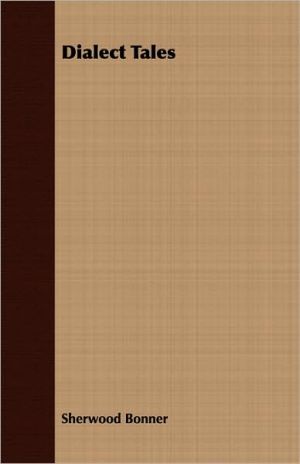

 |

|

The average rating for Dialect Tales based on 2 reviews is 4 stars.
Review # 1 was written on 2019-12-18 00:00:00 Ruthanne Trefelner Ruthanne TrefelnerCowboy poetry and the companion cowboy songs were an integral part of the American western frontier. Their appeal continued long after the wild west no longer existed. Witness the large number of movies featuring singing cowboys such as Roy Rogers and Gene Autry. Roy Rogers was singing in western movies up until roughly 1952 and Autry's career ended at roughly the same time. Given the timeless appeal of this type of literature and the songs that emerged from it, there is no surprise that this collection will move the fan. There is something about verse that describes the harshness and isolation of prairie life, how the winter can be so strong that it wipes out most of the cattle. The cowboys that tend to the cattle are a tough lot, living outside for extended periods, facing the danger of being caught in a stampede and closing it all off with a low end-of-season payoff. These poems are not about the gunfights or battles with Native Americans that were popular entertainment fare, they are about living, farming and ranching from Montana to the Dakotas and then on up into Canada. It was a harsh existence where hard work was often not enough, nature also had to provide the essentials of timely rain, calm weather and a lack of insect vermin. Fans of the old west will enjoy these tributes to the life in verse. |
Review # 2 was written on 2017-08-27 00:00:00 Nonyo Bizness Nonyo BiznessSailing the Inland Sea is a collection of essays in which Neville explores the meaning of place and geography as she interacts with writers from the Midwest as well as other authors from around the world. In doing so, she also explores writing techniques. Some of these essays are brilliant. In “Sacred Space in Ordinary Time,†she begins a Sunday looking for sacred places, starting her journey at a shopping mall. Another powerful essay “Where\'s Iago,†discusses the way a story needs an Iago (a character from Shakespeare\'s Othello) to serve as a catalysis and to move the story along. Iago has a long and noble and sinister history, tracing his roots back to the snake in the Garden of Eden (page 126). As in many of her essays, she weaves in different threads including a discussion of evil, the philosophy of Nietzsche and theology of Neibuhr, the wisdom of Vonnegut and a novel by Tayeb Salih, a Sudanese author (his book, Season of Migration to the North is now on my reading list). A third essay that I particularly liked was “The Gift of Fire,†when she discusses her work patients in a mental institution and the linkage between mental illness and creativity. Water is a constant metaphor used throughout these essays. She humorously quips, when told to gather a particular yacht club for a river trip, that “There is something incredibly midwestern-populist about calling the place a Yacht Club.†(23) She constantly refers to rivers and lakes and even to seas that no longer exist. She notes that Indianapolis native Vonnegut was fond of saying his hometown is the largest city in the world without a navigable body of water. The sailing aspect from her title comes through in her technique of weaving a variety of themes together. Like a sailboat running against the wind, her essays tack back and forth, always moving toward a particular destination but never in a straight line. (See her discussion on this on page 102). Although Neville must mention a hundred authors in her essays (maybe even mentioning too many authors), the late Kurt Vonnegut comes up most frequently. Not only are they both from Indianapolis, their grandfathers worked together. Vonnegut\'s was an architect who built many of the stately homes in the city, and Neville\'s grandfather was a cabinetmaker whose craft can be seen in these homes. Sailing the Inland Sea didn't provide the background into Midwestern literature, as I hoped it might when I purchased the book. But that\'s not its purpose. It does, however, provide insight into the role place plays into stories but more importantly, the essays serve as a wonderfully creative “writing guide.†I enjoyed these essays and recommend them to you. Let me leave you with one finally bit of insight from the book. When writing about the lack of cars in New Harmony, she notes that it\'s “because it\'s hard, as it should be, to find your way to harmony, new or otherwise.†(93) |
CAN'T FIND WHAT YOU'RE LOOKING FOR? CLICK HERE!!!